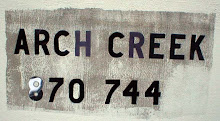NYT story here. (Emphasis added.)
SHORTLY before Lynn Sugarman of Teaneck, N.J., bought her summer home in Lake George, N.Y., two years ago, a routine inspection revealed it had elevated levels of radon, a radioactive gas that can cause lung cancer. So she called a radon measurement and mitigation technician to find the source.
“He went from room to room,” said Dr. Sugarman, a pediatrician. But he stopped in his tracks in the kitchen, which had richly grained cream, brown and burgundy granite countertops. His Geiger counter indicated that the granite was emitting radiation at levels 10 times higher than those he had measured elsewhere in the house.
“My first thought was, my pregnant daughter was coming for the weekend,” Dr. Sugarman said. When the technician told her to keep her daughter several feet from the countertops just to be safe, she said, “I had them ripped out that very day,” and sent to the state Department of Health for analysis. The granite, it turned out, contained high levels of uranium, which is not only radioactive but releases radon gas as it decays. “The health risk to me and my family was probably small,” Dr. Sugarman said, “but I felt it was an unnecessary risk.”
As the popularity of granite countertops has grown in the last decade — demand for them has increased tenfold, according to the Marble Institute of America, a trade group representing granite fabricators — so have the types of granite available. For example, one source, Graniteland (graniteland.com) offers more than 900 kinds of granite from 63 countries. And with increased sales volume and variety, there have been more reports of “hot” or potentially hazardous countertops, particularly among the more exotic and striated varieties from Brazil and Namibia.
“It’s not that all granite is dangerous,” said Stanley Liebert, the quality assurance director at CMT Laboratories in Clifton Park, N.Y., who took radiation measurements at Dr. Sugarman’s house. “But I’ve seen a few that might heat up your Cheerios a little.” . . .
The E.P.A. recommends taking action if radon gas levels in the home exceeds 4 picocuries per liter of air (a measure of radioactive emission); about the same risk for cancer as smoking a half a pack of cigarettes per day. In Dr. Sugarman’s kitchen, the readings were 100 picocuries per liter. In her basement, where radon readings are expected to be higher because the gas usually seeps into homes from decaying uranium underground, the readings were 6 picocuries per liter. . . .
Wow. Glad I didn't choose granite for the kitchen. (It's bad enough that I smoke.)

1 comment:
yeezy boost 350
kd 12
moncler jacket
moncler jackets
golden goose
kyrie 6
jordan sneakers
supreme clothing
moncler outlet
curry 6
Post a Comment